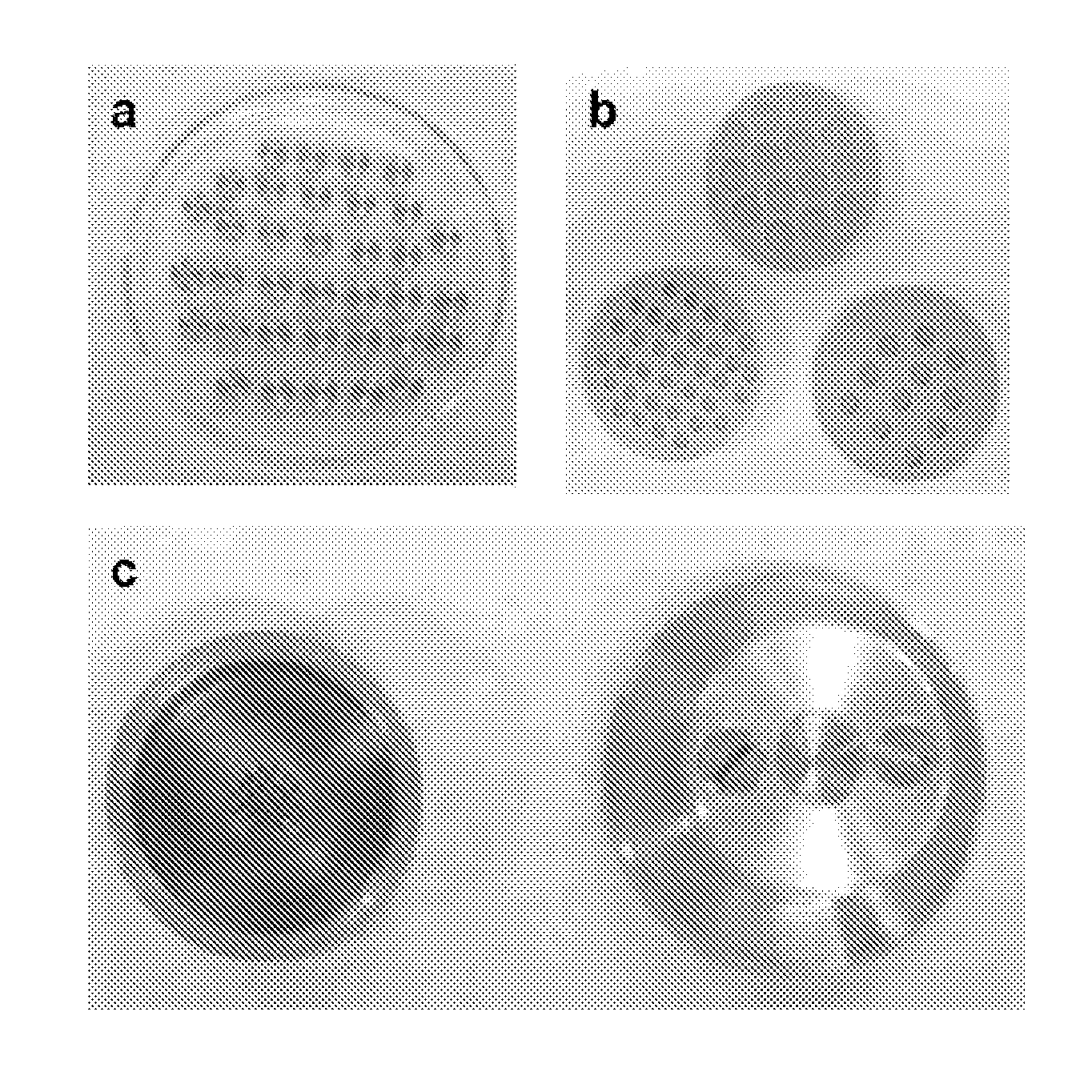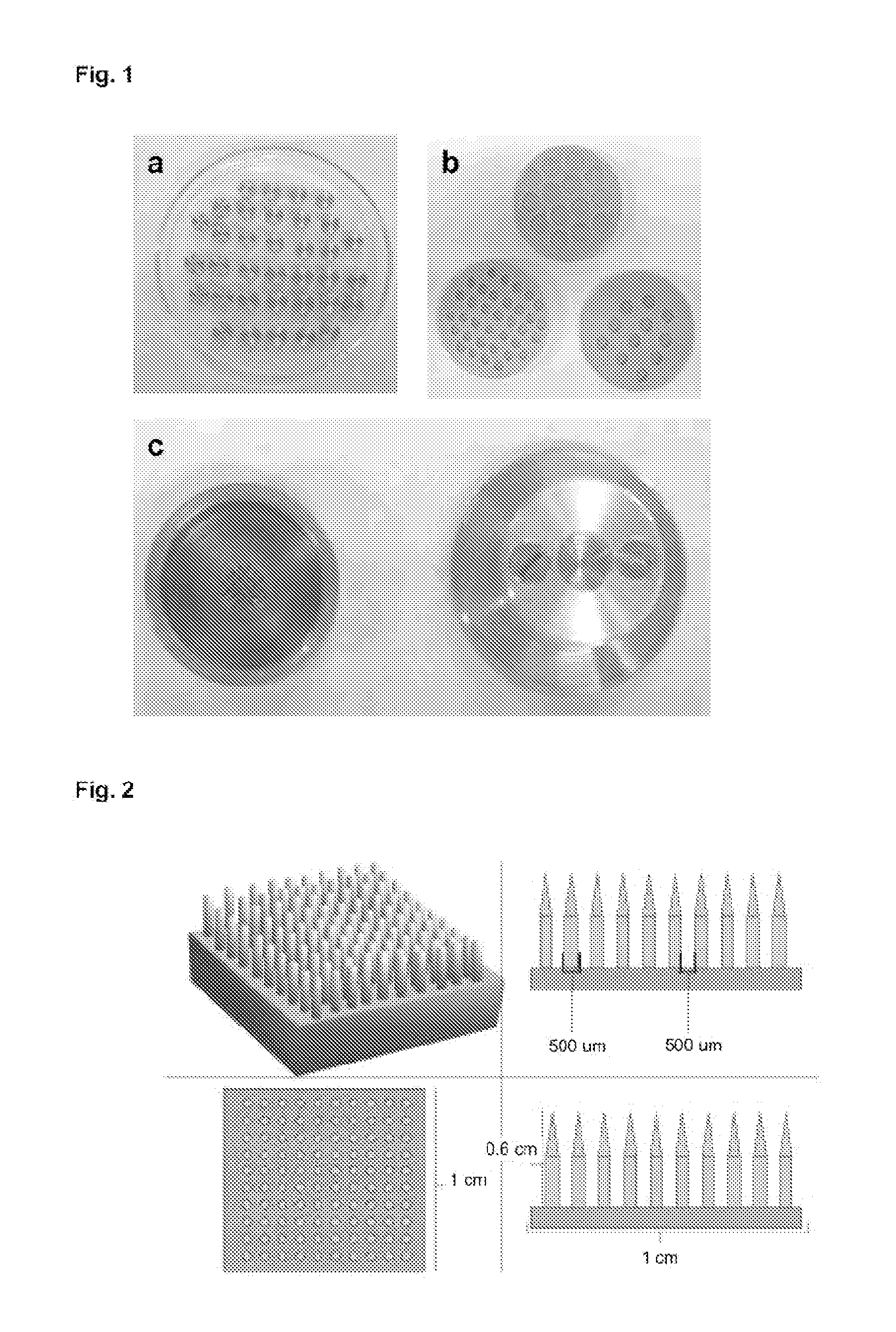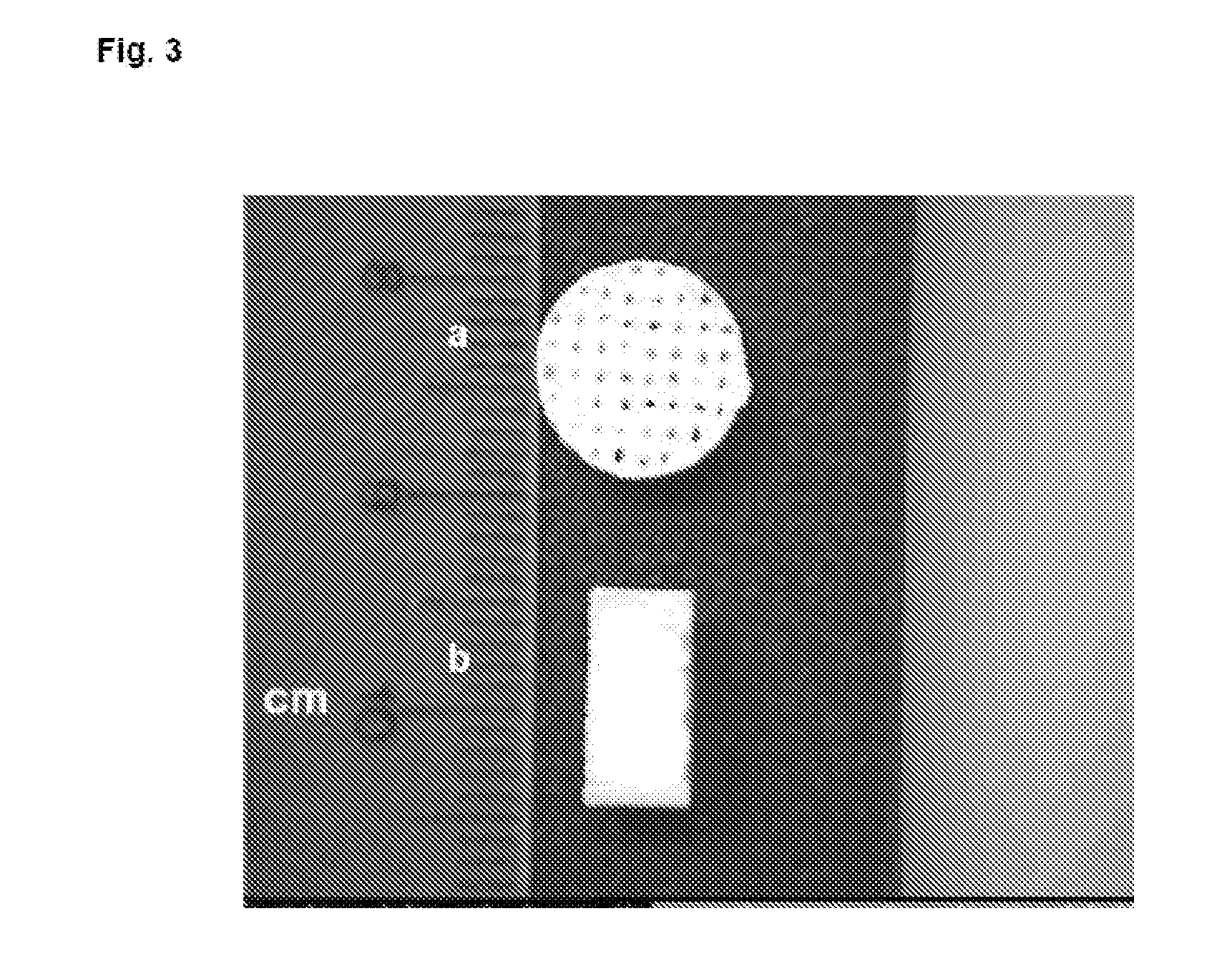Three-dimensional matrices of structured porous monetite for tissue engineering and bone regeneration, and method of the preparation thereof
a three-dimensional matrix and structured porous technology, applied in the field of tissue engineering, can solve the problems of limited bone supply, serious health problems, and patient furthermore being subjected to additional trauma
- Summary
- Abstract
- Description
- Claims
- Application Information
AI Technical Summary
Benefits of technology
Problems solved by technology
Method used
Image
Examples
example 1
Method of Synthesis of the Matrices of the Invention
[0194]To synthesize the matrices of the invention, a solid phase was mixed with double-distilled water (liquid phase).
[0195]The solid phase comprises but is not limited to an acidic calcium phosphate, a basic calcium phosphate, a pore-inducing agent such as calcium carbonate and a setting retarder such as sodium pyrophosphate.
1.1 Preparation of the Solid Phase
[0196]The solid phase of the calcium cement is made up of a basic calcium phosphate and an acidic calcium phosphate. The basic calcium phosphate is beta-tricalcium phosphate (β-TCP) and the acidic calcium phosphate is monocalcium phosphate. The two components are mixed in a molar ratio of 1.785 in mortar by hand for 10 minutes. Calcium carbonate is added at concentrations between 1-20% (weight / weight) preferably between 3-10%. 0.54% (weight / weight) sodium pyrophosphate is used as a retarder of the setting reaction.
[0197]Specifically, to prepare beta-tricalcium phosphate (β-TCP...
example 2
Specific Production of Specific Monetite Pellets with Structured Porosity
[0211]By way of example and for the purpose of obtaining cements with optimal characteristics, the powder component formed by 0.8 g of monocalcium phosphate anhydrous, 1.4 g of beta-tricalcium phosphate, 12 mg of sodium pyrophosphate and 110 mg of calcium carbonate was mixed for 30 seconds with 0.77 ml of water. One minute after starting the setting, the molds described below were applied to the cement for 30 seconds.
2.1 Use of a Single Mold in the Process for Obtaining Cylindrical Matrices of Monetite with Structured Porosity
[0212]For the specific performance of this example, silicone molds with the following dimensions and number of punches were used:[0213]a) 1 cm in diameter, 5 mm or 3 mm in height and 64 punches[0214]b) 0.8 cm in diameter, 5 mm or 3 mm in height and 39 punches[0215]c) 0.7 cm in diameter, 5 mm or 3 mm in height and 28 punches[0216]d) 0.5 cm in diameter 3 mm in height and 12 punches
[0217]In a...
example 3
Comparative Studies Between the Matrices of Monetite with Structured Porosity and Amorphous Monetite
3.1 Microscopic Study
[0250]A comparative assay of microscopic structure of the amorphous matrices and of the matrices with structured porosity of the invention was then carried out. To carry out said assay, scanning electron microscopy techniques by means of known processes for a person skilled in the art were used.
Microscopic Structure of the Matrix of Amorphous Porous Monetite
[0251]The biomaterial arranged in the form of amorphous matrix (FIGS. 6a, b) obtained an uncontrolled porosity. In other words, they show an irregular distribution of macropores, produced during the process for obtaining the cement, described in Examples 1.1 to 1-6. The macropores of the amorphous matrix are cavities in the biomaterial and do not connect the internal structure (FIG. 7).
[0252]In relation to the number and distribution of macropores, the scarcity thereof is observed. The presence of macropores is...
PUM
| Property | Measurement | Unit |
|---|---|---|
| Temperature | aaaaa | aaaaa |
| Length | aaaaa | aaaaa |
| Length | aaaaa | aaaaa |
Abstract
Description
Claims
Application Information
 Login to View More
Login to View More - R&D
- Intellectual Property
- Life Sciences
- Materials
- Tech Scout
- Unparalleled Data Quality
- Higher Quality Content
- 60% Fewer Hallucinations
Browse by: Latest US Patents, China's latest patents, Technical Efficacy Thesaurus, Application Domain, Technology Topic, Popular Technical Reports.
© 2025 PatSnap. All rights reserved.Legal|Privacy policy|Modern Slavery Act Transparency Statement|Sitemap|About US| Contact US: help@patsnap.com



